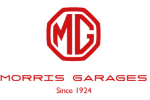Occupational health and safety software provides numerous benefits to organizations in managing and improving their workplace safety practices. Here are some key advantages of using occupational health and safety software:
1. Streamlined Compliance:
Occupational health and safety software helps organizations comply with legal and regulatory requirements. It automates and centralizes compliance processes, ensuring that necessary safety measures are implemented and documented. This reduces the risk of non-compliance penalties and improves overall safety performance.
2. Incident Reporting and Investigation:
The software enables efficient incident reporting and investigation processes. Employees can easily report incidents, near-misses, or hazards using the software, which triggers an automated workflow for investigation, corrective actions, and follow-up. This helps identify root causes, implement preventive measures, and mitigate future risks.
3. Risk Assessment and Management:
Occupational health and safety software facilitates comprehensive risk assessments by providing standardized templates, checklists, and guidelines. It allows organizations to identify potential hazards, assess their likelihood and severity, and prioritize actions to control and manage risks effectively. This proactive approach reduces workplace accidents and injuries.
4. Training and Certification Management:
The software simplifies the management of employee training programs and certifications. It tracks training requirements, schedules, and completion status, ensuring that employees receive necessary safety training and certifications. This enhances employee competence, awareness, and adherence to safety protocols.
Top trends in market for Health and Safety Management Software:-
The market for Health and Safety Reporting Software is constantly evolving to meet the growing needs and demands of organizations. Here are some of the top trends in this market:
A. Cloud-Based Solutions:
Cloud-based health and safety management software is gaining popularity due to its flexibility, scalability, and accessibility. It allows for easy remote access, real-time updates, and seamless collaboration across multiple locations.
B. Mobile Applications:
The rise of mobile technology has led to an increased demand for health and safety management software with mobile applications. These apps enable employees to report incidents, access safety information, and complete checklists using their mobile devices, enhancing convenience and efficiency.
C. Data Analytics and AI:
The integration of data analytics and artificial intelligence (AI) capabilities in health and safety management software is becoming more prevalent. These technologies enable organizations to analyze large volumes of safety data, identify patterns and trends, and make data-driven decisions to prevent incidents and improve overall safety performance.
It’s important to note that these trends may evolve over time and new ones may emerge as technology and industry needs continue to advance.
Points to keep in mind while looking for software to be useful in construction health and safety.
When looking for software to support construction health and safety management, there are several key points to keep in mind. These include:
- Compliance with Regulations: Ensure that the software aligns with relevant health and safety regulations and standards specific to the construction industry. It should have features and capabilities to help you meet regulatory requirements and ensure compliance.
- Hazard Identification and Risk Assessment: The software should enable efficient hazard identification and risk assessment processes. Look for features that facilitate comprehensive risk assessments, track identified hazards, and prioritize corrective actions.
- Incident Reporting and Investigation: The software should have robust incident reporting and investigation capabilities. It should allow for easy reporting of incidents, near misses, and hazards, as well as efficient investigation workflows to identify root causes and implement corrective measures.
- Safety Documentation and Policies: Look for software that centralizes safety documentation and enables the development, management, and communication of safety policies and procedures. It should provide easy access to up-to-date information, ensuring consistency across construction sites.
By considering these points, you can find software that effectively supports construction health and safety management, enhances compliance, and promotes a safer work environment on construction sites.
Key aspects to look for an Occupational Health and Safety Software:
When selecting an Occupational Health and Safety (OHS) system for your organization, consider the following key aspects: compliance with regulations, risk assessment and hazard management capabilities, robust incident reporting and investigation features, centralized safety policies and procedures, training and competency management tools, and support for occupational health management. By considering these aspects, you can choose an OHS system that meets your organization’s needs and helps maintain a safe work environment.
Also, Checkout – Creating a Virtual Occupational Health Program
Will Occupational Health Software Systems Cease to exist?
Conclusion:
This application aims to encourage organizations to take control and preventive measures of their health in-order to improve performance. And also to manage healthcare costs of employees currently working.
The benefits derived from effectively implemented wellness programs are; improved employee morale and commitment to the organization, improved employee productivity, decreased turnover, improved safety behavior and decreased absenteeism. The study’s findings also indicate that organizations will benefit from implementing health and safety programs through decreased health care costs, reduced workers’ compensation claims. And enhanced corporate image.
OccuCare provides all aspects of a need for corporations for managing the health of their employees. Or either via web or via applications designed and customized as per client’s need and requirement. Comparing the health index of employees’ examination rounds enables a more accurate assessment of the site’s progress or worsening of health performance.










































































